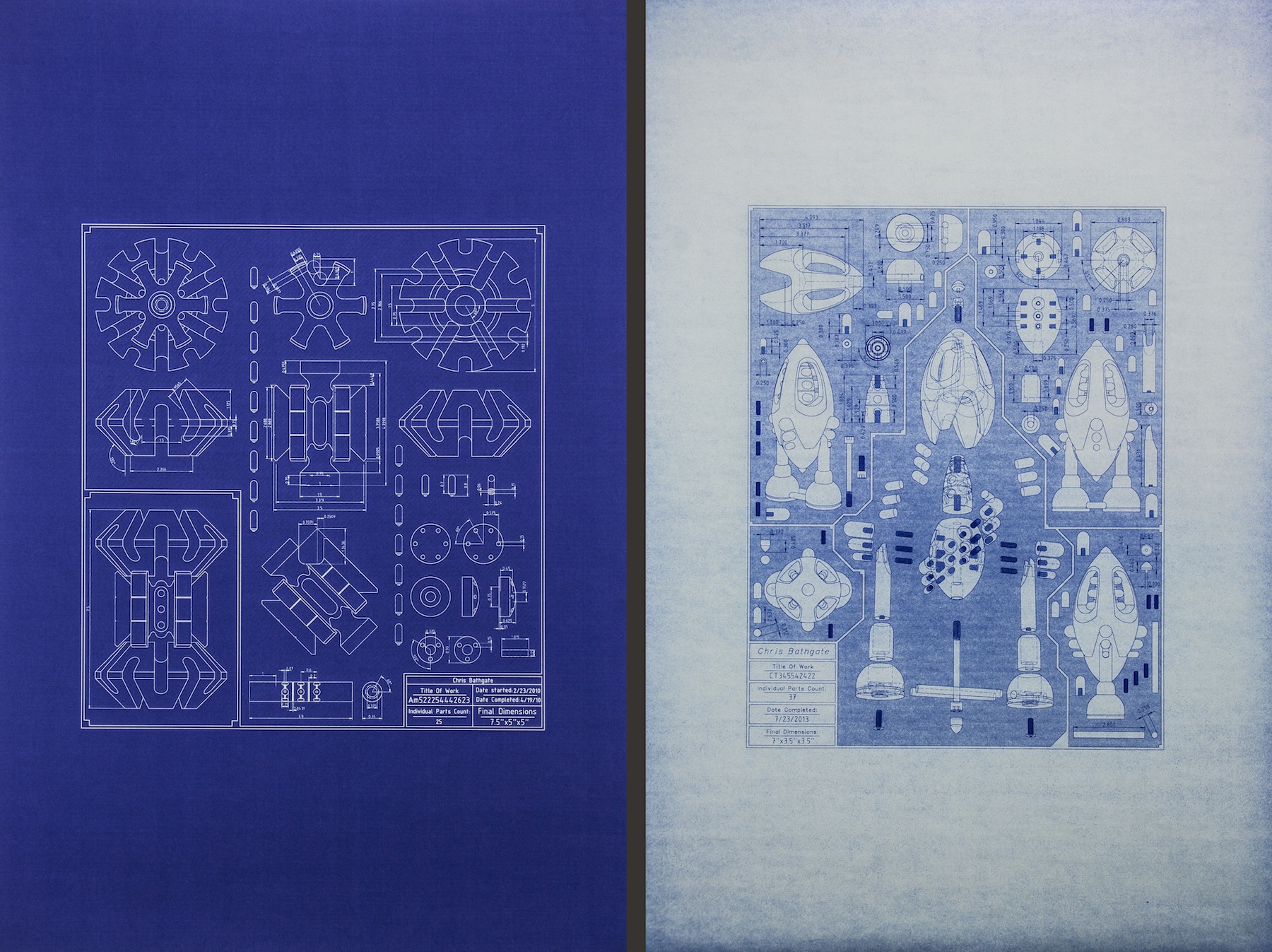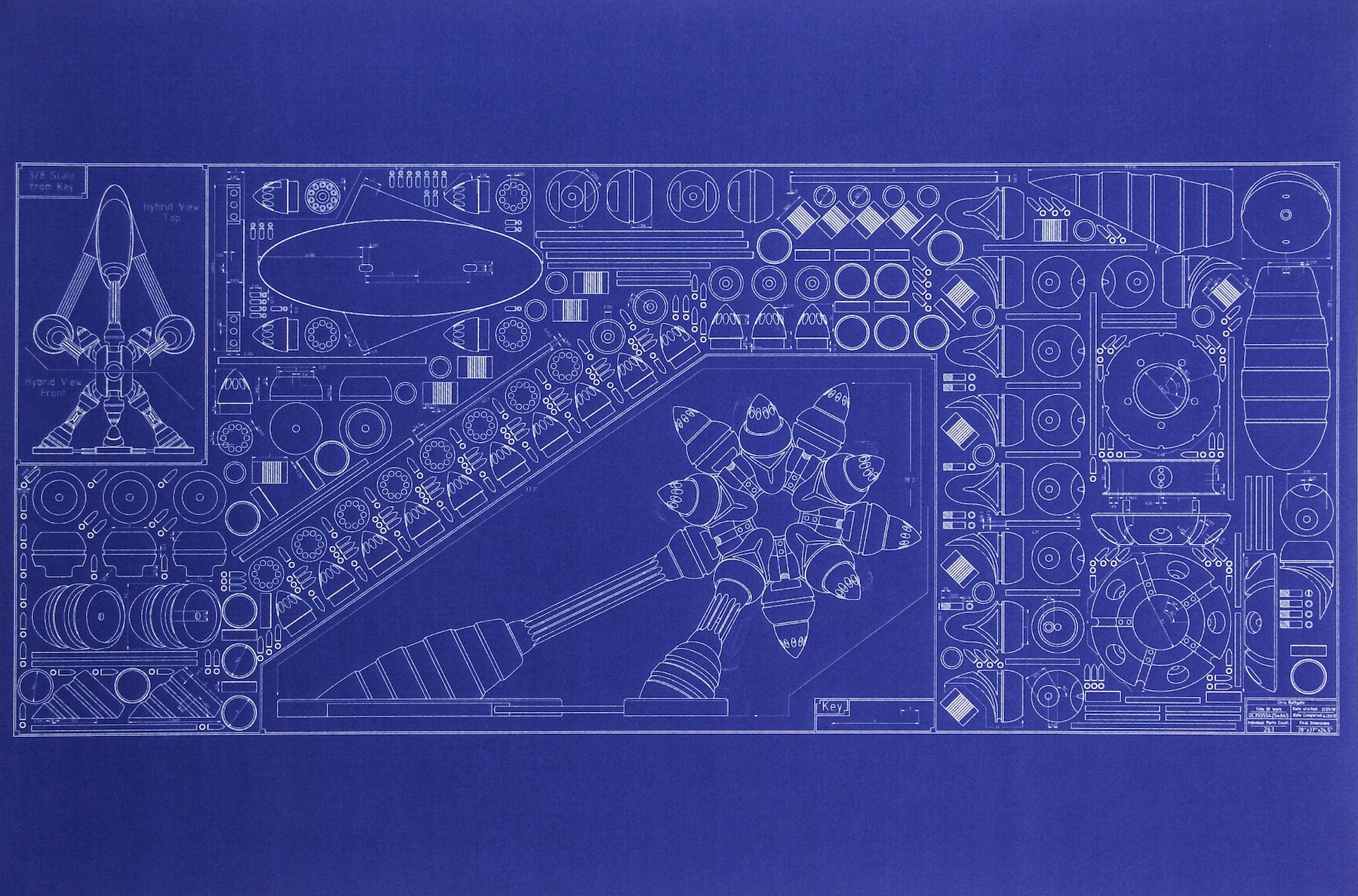Those of you who follow my work, know I am constantly refining the details of my sculptures through technical drawings. They represent the first step in translating my conceptual ideas into real life objects and I have posted them in many forms over the years. They are integral to my creative process and serve many functions during the fabrication of my sculpture works.
But one thing I have noticed while making these drawings is that an accurate drawing that one can utilize to build a sculpture is quite often, not a very interesting one to look at. I have dedicated a lot of thought to the task of producing both useful and interesting drawings at the same time< this has led me to try many different approaches over the years, some more successful than others.
Developing my drawings as a separate art form has meant working on them long after the sculptures they were intended to help me build were complete. I had decided that is was important that I take the same care and craftsmanship I use for my metal works and apply it to drafting each drawing. I have spent countless hours recomposing each one into a single stand-alone work that could serve as an aesthetic compliment to the sculpture it represented. My goal has always been to make drawings that were both fascinating to look at, but also technically accurate so they may provide insight on how each sculpture is engineered, which is a major part of what I find so compelling about the work I do.
But until recently, the end result of all of this work was only a digital file on my hard drive, one that I could use to produce either digital images, or conventional digital prints. I was quite happy with how these looked, but I am a hands on kind of person and I always wanted to do something more with them, something a little more tactile and tangible.
So very recently, after an off handed comment by a friend and some research, it dawned on me that what was missing was an authentic way to print the drawings that would yield something a bit more interesting and unique. Even though so much of what I do is digital, my main focus has always been about using different processes and their inherent restraints to create one of kind objects that reference the craft that is used to make them in some fundamental way. It occurred to me that drafting, as a craft happens to have a rich history of tangible, physical printing processes that can be utilized to great effect and this was something worth looking into.
So As a further homage to the process these drawings were intended to explore, I recently decided the best way to officially complete, and indeed actually print them, was to use a very old fashioned, but authentic process called Diazo Printing. Diazo printing is one of a number of different processes used to create copies of architectural and technical drawings. It was developed around the 1940’s and has since been replaced by more modern processes and so has fallen out of wide spread use, but it is still available if you are willing to search around a bit.
A lucky break on EBay and a 500-mile drive were all it took for me to become the proud owner of a very old, but perfectly functional blue print machine that I am now experimenting with.
The thing that attracted me the most about this process, was that it is sort of a manual one. All of the copies are produced using a single master drawing printed on a translucent piece of vellum paper. I really like the idea of having a single, physical master hard copy of my drawings, there is a certain finality to it that having a digital file just can't be compared to. The rest of the process involves using a light sensitive paper to create a copy of the drawing using the translucent master print. The paper is exposed to ultra violet light with the original on top of it to serve as the negative. It is then developed by passing it through a chamber of ammonia vapor that turns the light sensitive coating on the paper a deep blue. This process is often called blue lining, as the prints created are positives of the drawings, meaning the lines produced are blue on a white background.
The process that preceded Diazo, was a little different. It involved using glass plates, a different light sensitive emulsion and setting the whole mess out in the sun for many hours to expose the drawings. It produced prints that were negatives of the original, which is typically what we think of when we hear the word “blueprint” as it was characterized by white lines on a blue background.
In developing these drawings for printing, I felt it necessary to emulate both styles of prints. So you will find that half of my prints are traditional blue lines, while the other half are inverse blueprints. I think both types are a beautiful and a very genuine way to realize these drawings in a physical form.
But one thing I have noticed while making these drawings is that an accurate drawing that one can utilize to build a sculpture is quite often, not a very interesting one to look at. I have dedicated a lot of thought to the task of producing both useful and interesting drawings at the same time< this has led me to try many different approaches over the years, some more successful than others.
Developing my drawings as a separate art form has meant working on them long after the sculptures they were intended to help me build were complete. I had decided that is was important that I take the same care and craftsmanship I use for my metal works and apply it to drafting each drawing. I have spent countless hours recomposing each one into a single stand-alone work that could serve as an aesthetic compliment to the sculpture it represented. My goal has always been to make drawings that were both fascinating to look at, but also technically accurate so they may provide insight on how each sculpture is engineered, which is a major part of what I find so compelling about the work I do.
But until recently, the end result of all of this work was only a digital file on my hard drive, one that I could use to produce either digital images, or conventional digital prints. I was quite happy with how these looked, but I am a hands on kind of person and I always wanted to do something more with them, something a little more tactile and tangible.
So very recently, after an off handed comment by a friend and some research, it dawned on me that what was missing was an authentic way to print the drawings that would yield something a bit more interesting and unique. Even though so much of what I do is digital, my main focus has always been about using different processes and their inherent restraints to create one of kind objects that reference the craft that is used to make them in some fundamental way. It occurred to me that drafting, as a craft happens to have a rich history of tangible, physical printing processes that can be utilized to great effect and this was something worth looking into.
So As a further homage to the process these drawings were intended to explore, I recently decided the best way to officially complete, and indeed actually print them, was to use a very old fashioned, but authentic process called Diazo Printing. Diazo printing is one of a number of different processes used to create copies of architectural and technical drawings. It was developed around the 1940’s and has since been replaced by more modern processes and so has fallen out of wide spread use, but it is still available if you are willing to search around a bit.
A lucky break on EBay and a 500-mile drive were all it took for me to become the proud owner of a very old, but perfectly functional blue print machine that I am now experimenting with.
The thing that attracted me the most about this process, was that it is sort of a manual one. All of the copies are produced using a single master drawing printed on a translucent piece of vellum paper. I really like the idea of having a single, physical master hard copy of my drawings, there is a certain finality to it that having a digital file just can't be compared to. The rest of the process involves using a light sensitive paper to create a copy of the drawing using the translucent master print. The paper is exposed to ultra violet light with the original on top of it to serve as the negative. It is then developed by passing it through a chamber of ammonia vapor that turns the light sensitive coating on the paper a deep blue. This process is often called blue lining, as the prints created are positives of the drawings, meaning the lines produced are blue on a white background.
The process that preceded Diazo, was a little different. It involved using glass plates, a different light sensitive emulsion and setting the whole mess out in the sun for many hours to expose the drawings. It produced prints that were negatives of the original, which is typically what we think of when we hear the word “blueprint” as it was characterized by white lines on a blue background.
In developing these drawings for printing, I felt it necessary to emulate both styles of prints. So you will find that half of my prints are traditional blue lines, while the other half are inverse blueprints. I think both types are a beautiful and a very genuine way to realize these drawings in a physical form.
-
 Technical AM/CTThese prints are developed in conjunction with each sculpture, and are used as a digital reference for creating the programed directions for the machinery used to create the various components of the work. Once the works are finished the drawings are further composed to serve as an aesthetic compliment to the sculptures they represent.
Technical AM/CTThese prints are developed in conjunction with each sculpture, and are used as a digital reference for creating the programed directions for the machinery used to create the various components of the work. Once the works are finished the drawings are further composed to serve as an aesthetic compliment to the sculptures they represent. -
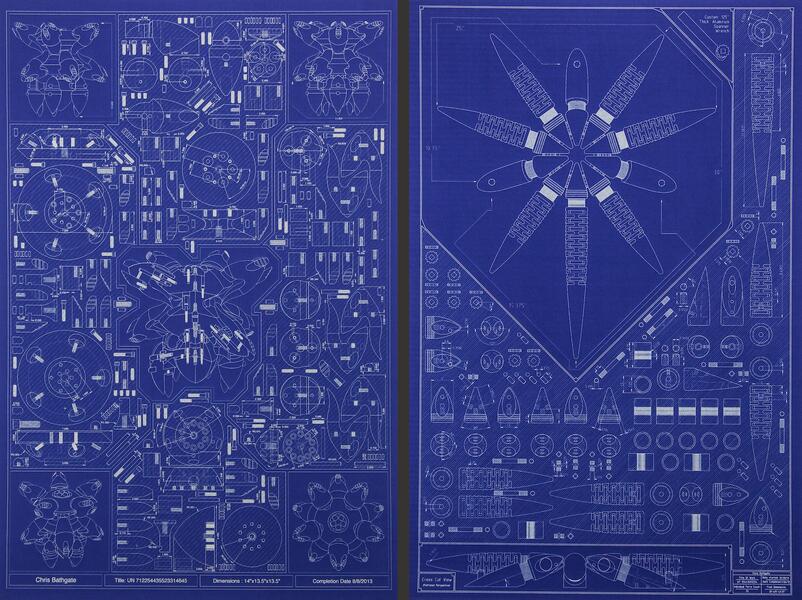 Technical UN/NTThese prints are developed in conjunction with each sculpture, and are used as a digital reference for creating the programed directions for the machinery used to create the various components of the work. Once the works are finished the drawings are further composed to serve as an aesthetic compliment to the sculptures they represent.
Technical UN/NTThese prints are developed in conjunction with each sculpture, and are used as a digital reference for creating the programed directions for the machinery used to create the various components of the work. Once the works are finished the drawings are further composed to serve as an aesthetic compliment to the sculptures they represent. -
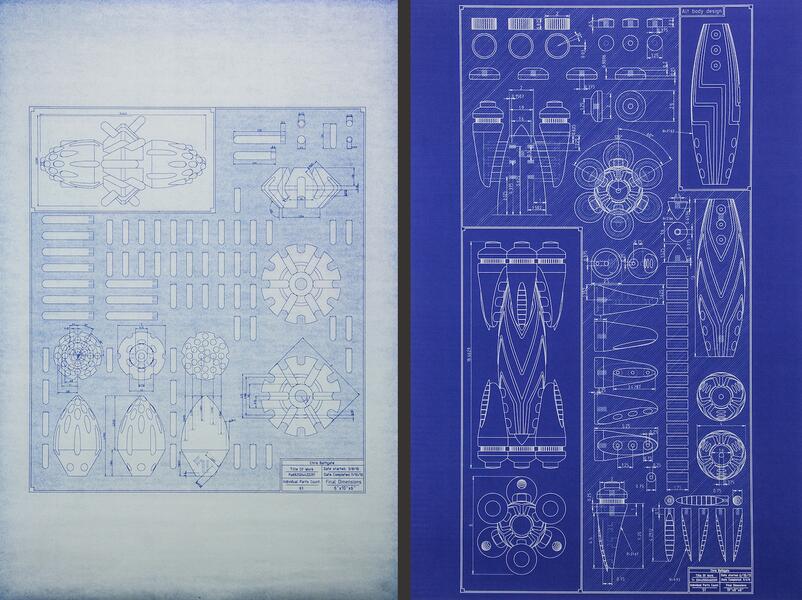 Technical PA/TRThese prints are developed in conjunction with each sculpture, and are used as a digital reference for creating the programed directions for the machinery used to create the various components of the work. Once the works are finished the drawings are further composed to serve as an aesthetic compliment to the sculptures they represent.
Technical PA/TRThese prints are developed in conjunction with each sculpture, and are used as a digital reference for creating the programed directions for the machinery used to create the various components of the work. Once the works are finished the drawings are further composed to serve as an aesthetic compliment to the sculptures they represent. -
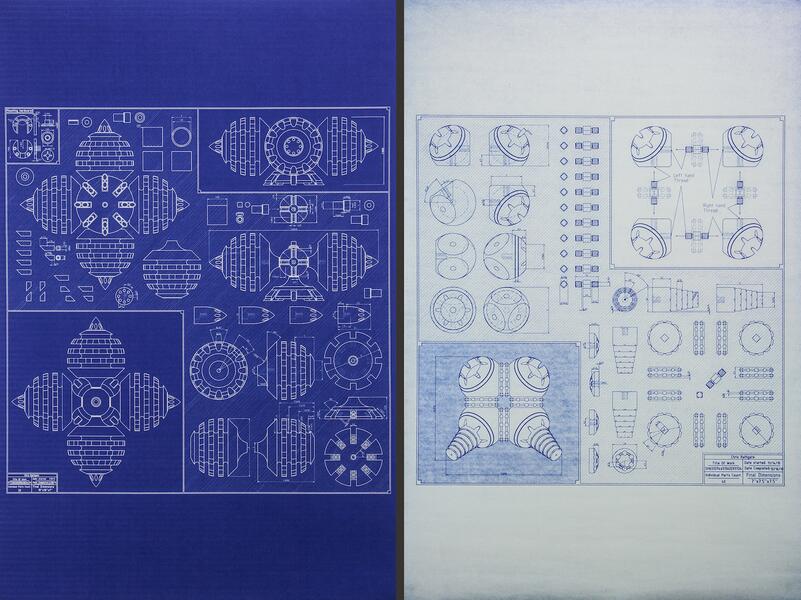 Technical ST/SHThese prints are developed in conjunction with each sculpture, and are used as a digital reference for creating the programed directions for the machinery used to create the various components of the work. Once the works are finished the drawings are further composed to serve as an aesthetic compliment to the sculptures they represent.
Technical ST/SHThese prints are developed in conjunction with each sculpture, and are used as a digital reference for creating the programed directions for the machinery used to create the various components of the work. Once the works are finished the drawings are further composed to serve as an aesthetic compliment to the sculptures they represent. -
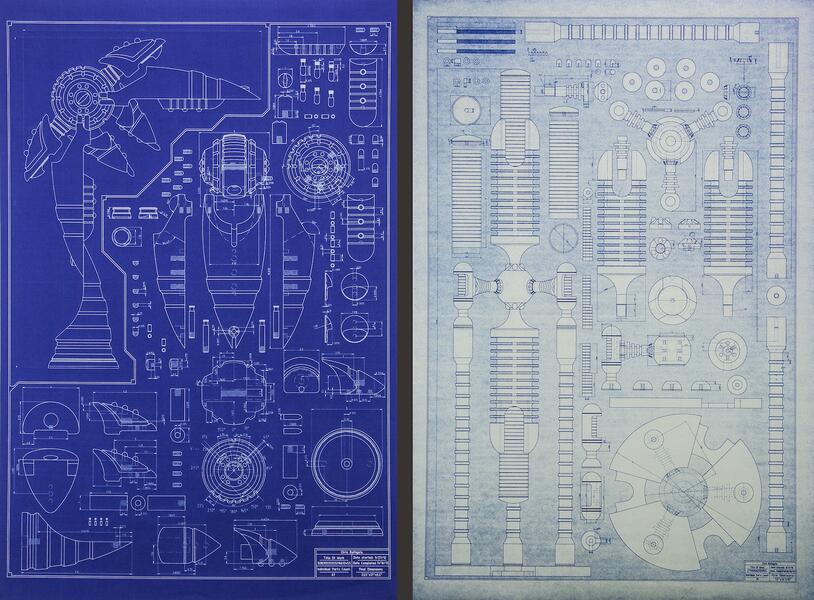 Technical SC/DNThese prints are developed in conjunction with each sculpture, and are used as a digital reference for creating the programed directions for the machinery used to create the various components of the work. Once the works are finished the drawings are further composed to serve as an aesthetic compliment to the sculptures they represent.
Technical SC/DNThese prints are developed in conjunction with each sculpture, and are used as a digital reference for creating the programed directions for the machinery used to create the various components of the work. Once the works are finished the drawings are further composed to serve as an aesthetic compliment to the sculptures they represent. -
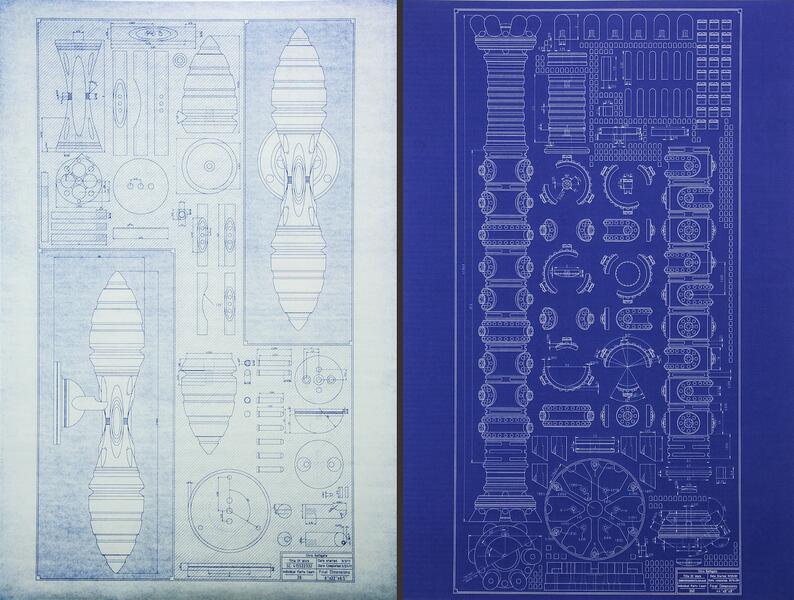 Technical SC/DNThese prints are developed in conjunction with each sculpture, and are used as a digital reference for creating the programed directions for the machinery used to create the various components of the work. Once the works are finished the drawings are further composed to serve as an aesthetic compliment to the sculptures they represent.
Technical SC/DNThese prints are developed in conjunction with each sculpture, and are used as a digital reference for creating the programed directions for the machinery used to create the various components of the work. Once the works are finished the drawings are further composed to serve as an aesthetic compliment to the sculptures they represent. -
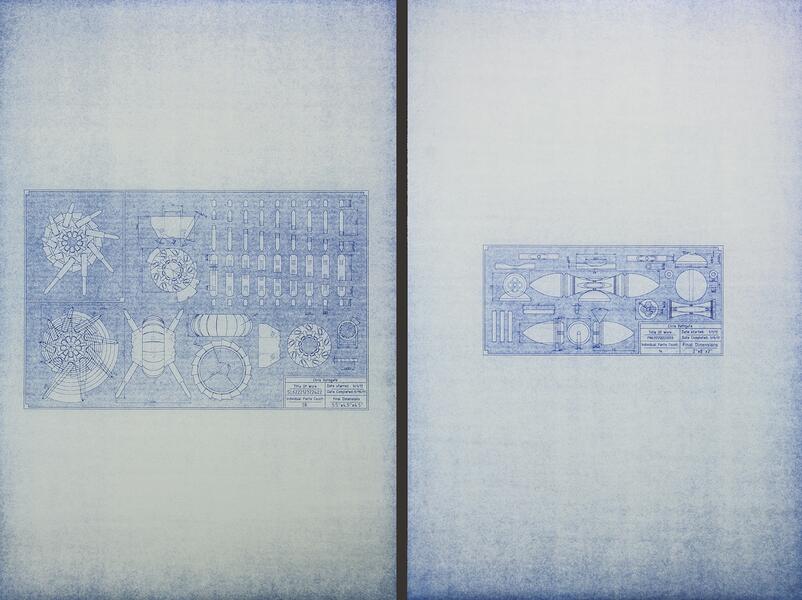 Technical PN/SLThese prints are developed in conjunction with each sculpture, and are used as a digital reference for creating the programed directions for the machinery used to create the various components of the work. Once the works are finished the drawings are further composed to serve as an aesthetic compliment to the sculptures they represent.
Technical PN/SLThese prints are developed in conjunction with each sculpture, and are used as a digital reference for creating the programed directions for the machinery used to create the various components of the work. Once the works are finished the drawings are further composed to serve as an aesthetic compliment to the sculptures they represent. -
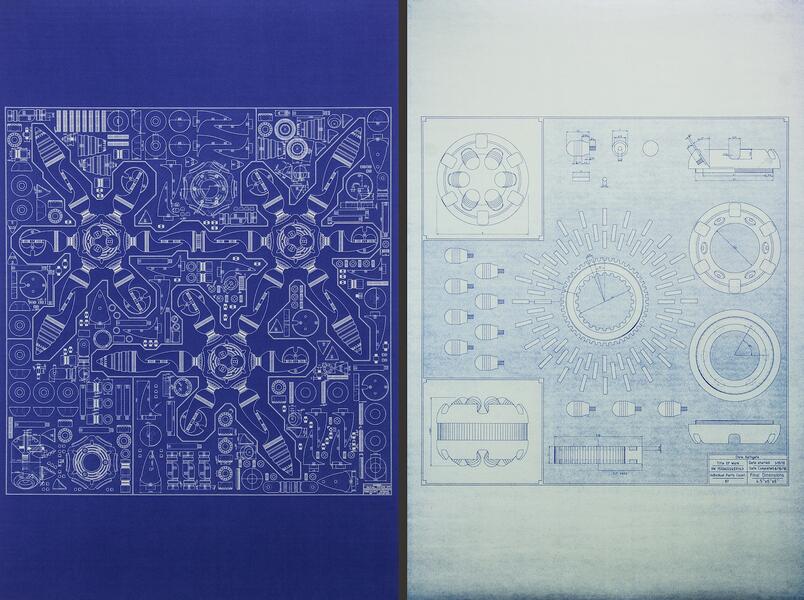 Technical ML/RNThese prints are developed in conjunction with each sculpture, and are used as a digital reference for creating the programed directions for the machinery used to create the various components of the work. Once the works are finished the drawings are further composed to serve as an aesthetic compliment to the sculptures they represent.
Technical ML/RNThese prints are developed in conjunction with each sculpture, and are used as a digital reference for creating the programed directions for the machinery used to create the various components of the work. Once the works are finished the drawings are further composed to serve as an aesthetic compliment to the sculptures they represent. -
 Technical DCThese prints are developed in conjunction with each sculpture, and are used as a digital reference for creating the programed directions for the machinery used to create the various components of the work. Once the works are finished the drawings are further composed to serve as an aesthetic compliment to the sculptures they represent.
Technical DCThese prints are developed in conjunction with each sculpture, and are used as a digital reference for creating the programed directions for the machinery used to create the various components of the work. Once the works are finished the drawings are further composed to serve as an aesthetic compliment to the sculptures they represent. -
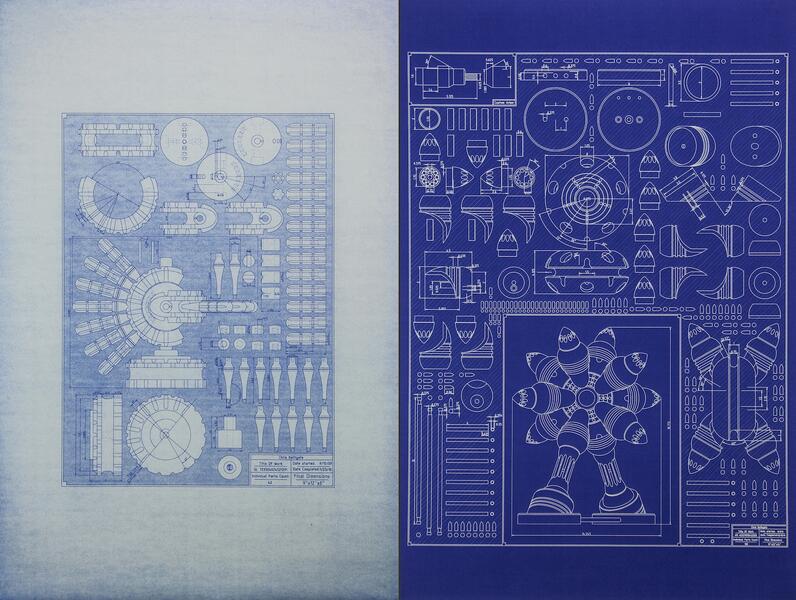 Technical GL/WRThese prints are developed in conjunction with each sculpture, and are used as a digital reference for creating the programed directions for the machinery used to create the various components of the work. Once the works are finished the drawings are further composed to serve as an aesthetic compliment to the sculptures they represent.
Technical GL/WRThese prints are developed in conjunction with each sculpture, and are used as a digital reference for creating the programed directions for the machinery used to create the various components of the work. Once the works are finished the drawings are further composed to serve as an aesthetic compliment to the sculptures they represent.
